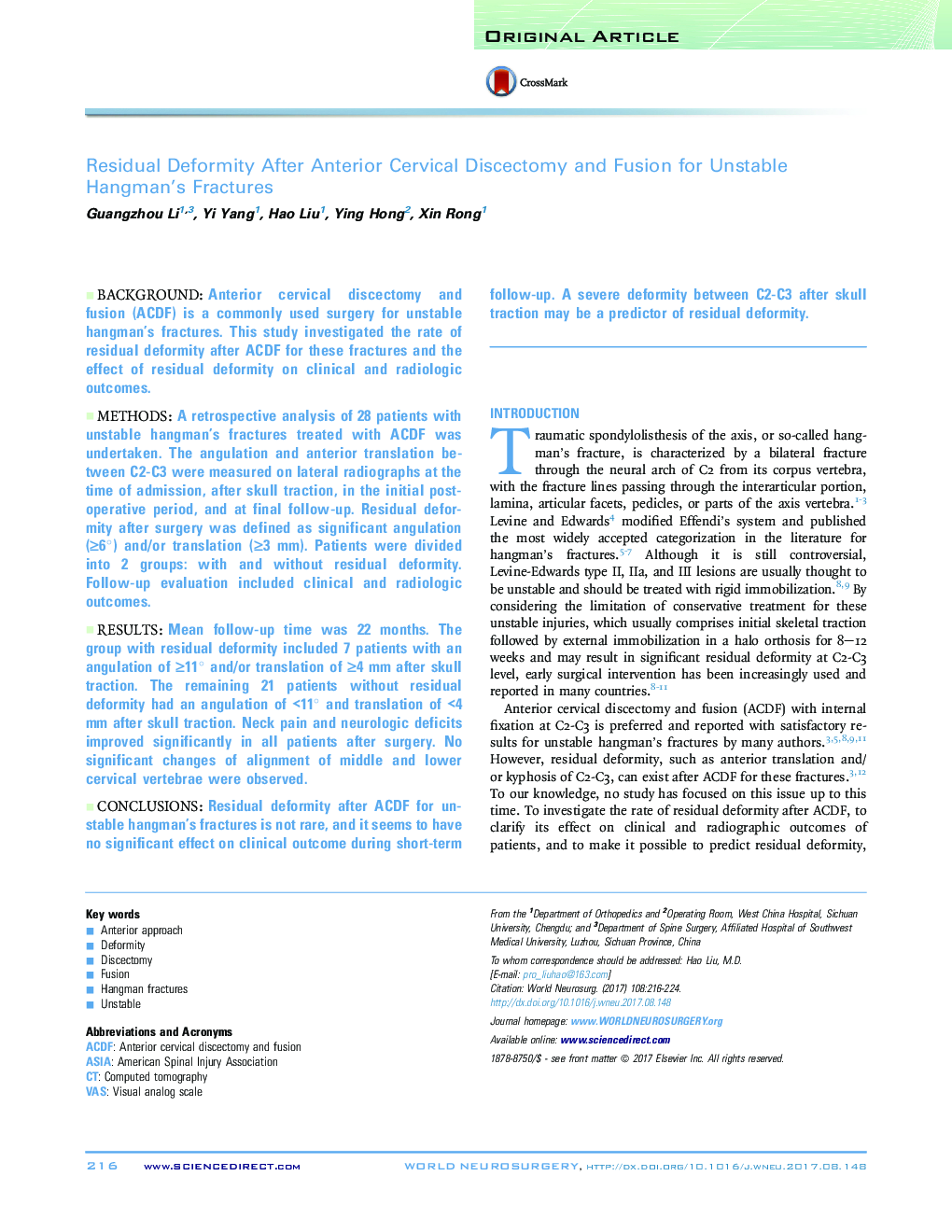| Article ID | Journal | Published Year | Pages | File Type |
|---|---|---|---|---|
| 5633773 | World Neurosurgery | 2017 | 9 Pages |
BackgroundAnterior cervical discectomy and fusion (ACDF) is a commonly used surgery for unstable hangman's fractures. This study investigated the rate of residual deformity after ACDF for these fractures and the effect of residual deformity on clinical and radiologic outcomes.MethodsA retrospective analysis of 28 patients with unstable hangman's fractures treated with ACDF was undertaken. The angulation and anterior translation between C2-C3 were measured on lateral radiographs at the time of admission, after skull traction, in the initial postoperative period, and at final follow-up. Residual deformity after surgery was defined as significant angulation (â¥6°) and/or translation (â¥3 mm). Patients were divided into 2 groups: with and without residual deformity. Follow-up evaluation included clinical and radiologic outcomes.ResultsMean follow-up time was 22 months. The group with residual deformity included 7 patients with an angulation of â¥11° and/or translation of â¥4 mm after skull traction. The remaining 21 patients without residual deformity had an angulation of <11° and translation of <4 mm after skull traction. Neck pain and neurologic deficits improved significantly in all patients after surgery. No significant changes of alignment of middle and lower cervical vertebrae were observed.ConclusionsResidual deformity after ACDF for unstable hangman's fractures is not rare, and it seems to have no significant effect on clinical outcome during short-term follow-up. A severe deformity between C2-C3 after skull traction may be a predictor of residual deformity.
